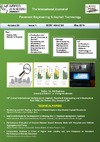Identificador persistente para citar o vincular este elemento:
https://accedacris.ulpgc.es/jspui/handle/10553/74619
| Campo DC | Valor | idioma |
|---|---|---|
| dc.contributor.author | Franesqui, Miguel A. | en_US |
| dc.contributor.author | Gallego, Juan | en_US |
| dc.date.accessioned | 2020-10-01T08:36:03Z | - |
| dc.date.available | 2020-10-01T08:36:03Z | - |
| dc.date.issued | 2019 | en_US |
| dc.identifier.issn | 1464-8164 | en_US |
| dc.identifier.uri | https://accedacris.ulpgc.es/handle/10553/74619 | - |
| dc.description.abstract | Top-down cracking (TDC) is one of the most frequent and important failure modes of asphalt pavements. In order to achieve long-lasting pavements, it is necessary to control the evolution of these cracks and so repair them before they become deeper and deteriorate the lower layers which are less accessible and cost more to repair. Self-healing of asphalt mixtures is possible if the temperature is raised near the softening point of the binder, thus allowing the fusion of the cracks. For this purpose conductive additions were used to promote induction heating when applying microwaves. This research shows the self-healing results of TDC on gap-graded asphalt concrete for very thin layers (AC-VTL) and open-graded porous asphalt (PA) after microwaves exposure. These mixtures were tested with diverse types, sizes and proportions of metallic additions (steel wool, steel filing and metallic powder, all of them from industrial waste). Three types of studies were performed: a) analysis of the type, particle size and content of each addition on the heating speed; b) temperature increase with the specific energy; c) monitoring of the healing process by using ultrasounds. Microwave exposure allowed the total closure of cracks using a waste product, with reduced times and applied energies compared to the reference mixtures without additions. Results validate the use of ultrasounds for monitoring the crack depth. | en_US |
| dc.language | eng | en_US |
| dc.relation.ispartof | The International Journal of Pavement Engineering & Asphalt Technology | en_US |
| dc.source | The International Journal of Pavement Engineering & Asphalt Technology [ISSN 1464-8164], v. 20 (1), p. 9-19, (Mayo 2019) | en_US |
| dc.subject | 330506 Ingeniería civil | en_US |
| dc.subject.other | Top-down cracking (TDC) | en_US |
| dc.subject.other | Self-healing | en_US |
| dc.subject.other | Metallic filler | en_US |
| dc.subject.other | Microwave | en_US |
| dc.subject.other | Crack depth | en_US |
| dc.subject.other | Non-destructive testing (NDT) | en_US |
| dc.subject.other | Ultrasound | en_US |
| dc.subject.other | Pavement maintenance | en_US |
| dc.title | Monitoring and self-healing of surface-initiated cracks in gap-graded asphalt pavements | en_US |
| dc.type | info:eu-repo/semantics/conferenceObject | en_US |
| dc.type | Conference proceedings | en_US |
| dc.relation.conference | 19th Annual International Conference on Asphalt, Pavement Engineering and Infrastructure | en_US |
| dc.identifier.doi | 10.1515/ijpeat-2016-0025 | en_US |
| dc.relation.volume | 20 | en_US |
| dc.investigacion | Ingeniería y Arquitectura | en_US |
| dc.type2 | Actas de congresos | en_US |
| dc.description.notas | 19th Annual International Conference on Asphalt, Pavement Engineering and Infrastructure April 2020, the Sensor City, Liverpool, UK. Editor: Dr. Atif Rasheed. Associate Editors: Dr. Evangelia Manola | en_US |
| dc.description.numberofpages | 15 | en_US |
| dc.utils.revision | Sí | en_US |
| dc.identifier.ulpgc | Sí | es |
| item.grantfulltext | open | - |
| item.fulltext | Con texto completo | - |
| crisitem.author.dept | GIR Fabricación integrada y avanzada | - |
| crisitem.author.dept | Departamento de Ingeniería Civil | - |
| crisitem.author.orcid | 0000-0003-3803-5690 | - |
| crisitem.author.parentorg | Departamento de Ingeniería Mecánica | - |
| crisitem.author.fullName | Franesqui García, Miguel Ángel | - |
| crisitem.event.eventsstartdate | 11-03-2020 | - |
| crisitem.event.eventsenddate | 12-03-2020 | - |
| Colección: | Actas de congresos | |
Vista resumida
Visitas
159
actualizado el 31-oct-2024
Descargas
188
actualizado el 31-oct-2024
Google ScholarTM
Verifica
Altmetric
Comparte
Exporta metadatos
Los elementos en ULPGC accedaCRIS están protegidos por derechos de autor con todos los derechos reservados, a menos que se indique lo contrario.
